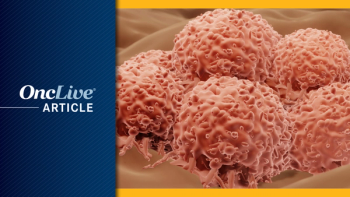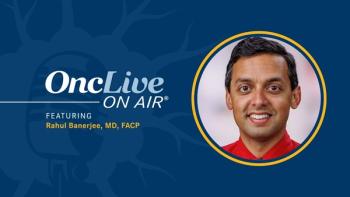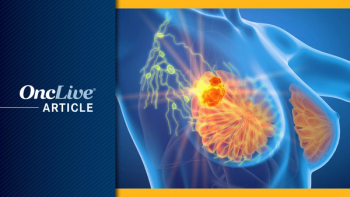
- August 2014
- Volume 15
- Issue 8
Update on Vismodegib's Place in the Treatment of Advanced BCC
Basal cell carcinoma (BCC) is the most common human malignancy and by far the most prevalent form of skin cancer, accounting for more than 80% of all cases.
Sherrif F. Ibrahim, MD, PhD
University of Rochester Medical Center
Wilmot Cancer Center
Department of Dermatology
Basal cell carcinoma (BCC) is the most common human malignancy and by far the most prevalent form of skin cancer, accounting for more than 80% of all cases. The typical BCC is a slow-growing tumor that is treatable by a variety of therapeutic modalities. Common in elderly, fair skinned individuals, this disease occurs largely in sun-exposed areas of the body and is felt to be a result of chronic ultraviolet exposure.
Fortunately, treatment of BCC is fairly straightforward, with surgical, destructive, and topical treatment options available. This results in a 5-year cure rate of greater than 90%.1 In certain cases, however, neglected, aggressive, or recurrent BCC can progress to an advanced state. In extremely rare cases, BCC may metastasize, carrying an extremely poor prognosis.
When considering treatment options for advanced BCC, choices are limited. In these situations, less invasive options such as electrodesiccation, curettage, cryosurgery, photodynamic therapy, or topical agents would not be effective.
When surgery is an option, this remains the gold standard for achieving the highest cure rate and should always be considered as first-line treatment.
However, patients may not be ideal surgical candidates if they are unable to tolerate surgery or if surgery is so extensive that it would result in significant deformity or loss of function (eg, loss of an ear or an eye).
With our increasing knowledge of the genetic basis of various conditions, targeted therapies are emerging and rapidly transforming our approach to the medical management of illnesses, including skin cancer. Among these is the first targeted inhibitor of the hedgehog pathway, vismodegib (Erivedge). Developed to address the lack of available medical options for the treatment of basal cell carcinoma (BCC), vismodegib was approved by the FDA in January 2012 for use in patients with locally advanced BCC who are not candidates for surgery or radiation and for patients with metastatic BCC (Figure).
Tumor Shrinkage Cheers Patients
Data reported from the ERIVACNE phase II trial2 are currently the most robust source for accurate information regarding drug efficacy and common adverse events (AEs). Of the 63 patients in the trial with locally advanced BCC, 43% met the criteria for an objective response to the drug and 21% had a complete response (confirmed by histologic evaluation). Only five patients had progressive disease while on drug, with 92% of patients experiencing some degree of reduction in tumor burden. The first clinical evaluation of patients was conducted at 8 weeks of therapy, and the majority of patients exhibited some degree of tumor shrinkage at this time.
When counseling new patients, they will often ask how long they need to be on the medication. It is important to mention that different patients will experience different response rates to therapy; however, if they are going to experience a favorable response, then this can be apparent within a relatively short period of time. Often this visible, and potentially profound shrinkage in tumor is excellent motivation for patients to continue treatment. For patients with conditions such as basal cell nevus syndrome or metastatic BCC, treatment should be continued until there is an intolerable AE or progression of disease while on drug.
Managing AEs and Tracking Tumors
With respect to AEs, those most commonly experienced in the published literature are muscle spasms (68%), alopecia (63%), dysgeusia (51%), weight loss (46%), fatigue (36%), nausea (29%), decreased appetite (23%), and diarrhea (22%). All patients experienced at least one AE in the phase II trial, but of the 104 patients in the trial, only 13 (12%) had an AE leading to discontinuation of the drug. Seven patients died during the study; however, no clear causative association with the study drug was identified. Counseling of premenopausal women also should be approached with caution, as inhibition of the hedgehog pathway is known to have teratogenic effects on a fetus. In these patients, pregnancy status should be verified prior to initiation of the drug, and highly effective forms of contraception should be utilized while on medication and for 7 months after discontinuation.
For all patients, dosage is fixed at 150 mg daily and supplied as an oral capsule. No baseline or ongoing laboratory workup is necessary, making initiation and maintenance of treatment quite simple.
With regard to drug—drug interactions, no known agents are known to alter plasma concentration of vismodegib; however, some theoretical considerations indicate that P-glycoprotein inhibitors and drugs that alter the pH of the upper gastrointestinal tract may reduce bioavailability of the medication or possibly increase AEs. Nevertheless, no clear association currently exists. With the exception of few large academic hospital pharmacies, vismodegib is administered through specialty pharmacies and shipped directly to patients.
As patients progress with treatment, they will begin to experience some degree of AEs, and these may take several weeks to manifest. It is a good idea to clearly document tumor characteristics photographically from several angles or radiologically for metastatic disease. Careful measurements and tumor dimensions should also be recorded for each visit.
No established guidelines exist for timing of follow-up visits; however, when initiating any new systemic agent, close and frequent visits are helpful in identifying any potential AEs, helping patients stay motivated, and assessing response to therapy. No published reports exist with recommendations on how best to manage side effects. Anecdotal reports indicate that nausea can be managed with oral antiemetics and muscle cramping can be tempered with low-dose muscle relaxants.
Other AEs such as alopecia and dysgeusia will occur to different degrees, but by definition cannot have greater than grade 2 severity. In the event of intolerable side effects, patients can be offered a break in treatment for several weeks and then resume drug therapy. This approach is particularly helpful in patients who experience an initial positive response to the drug but are discouraged by side effects.
Summary
Vismodegib is the only FDA-approved hedgehog inhibitor, and is indicated for the treatment of locally advanced and metastatic BCC. Once appropriate patients are identified, careful attention should be placed on thorough patient counseling and frequent follow-up visits. Dosing is oral, fixed at 150 mg daily, and requires no baseline or ongoing laboratory evaluation. While the drug is not meant for everyone, certain patients who are not candidates for surgery or radiation may benefit greatly from its use. Side effects of the drug are variable and often the only way to assess tolerability is with a trial of vismodegib. In clinical trials, very few AEs were of grade 3 or 4 severity. With continued use, additional information will likely emerge as to the mechanisms of AE occurrence and better ways to temper their severity.
Dr Ibrahim is a consultant and speaker for Genentech.
Figure. Potential Treatment Decision Flow Chart for Advanced BCCa
aThese are not established guidelines for treatment, but may help the practitioner decide upon appropriate therapy.
Often, more than one treatment may be appropriate. Whenever possible, invoke the help of a multidisciplinary tumor board.
BCC indicates basal cell carcinoma; BCNS, basal cell nevus syndrome.
References
- Rubin AL, Chen EH, Ratner D. Basal-cell carcinoma. N Engl J Med. 2005;353(21):2262-2269.
- Sekulic A, Migden MR, Oro AE, et al. Efficacy and safety of vismodegib in advanced basal-cell carcinoma. N Engl J Med. 2012;366(23):2171-2179.
Articles in this issue
over 11 years ago
Investigative Instincts Guided Vogelstein's Journey of Discoveryover 11 years ago
UCSF Researcher Puts Focus on AR Resistance Mechanismsover 11 years ago
Alpha-Particle Radiopharmaceuticals Moving Forward as AML Therapyover 11 years ago
Commentary: It's Time to Repackage the Fight Against Cigarettes
























































































